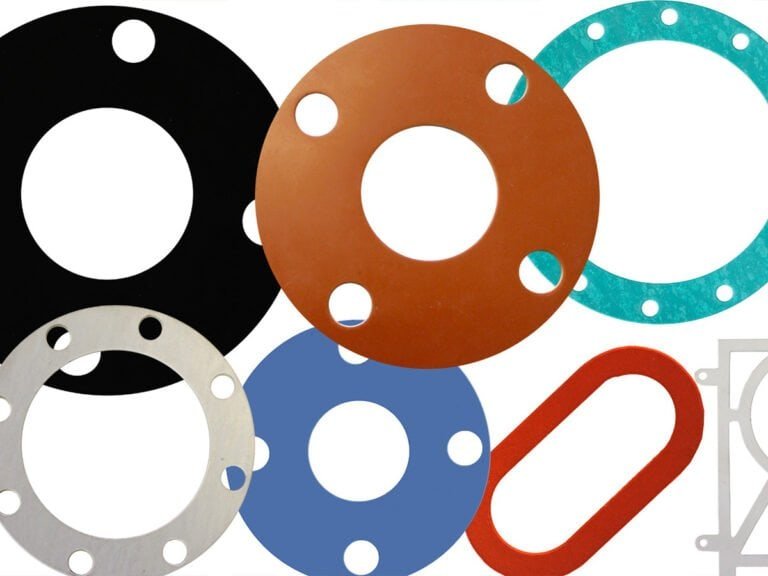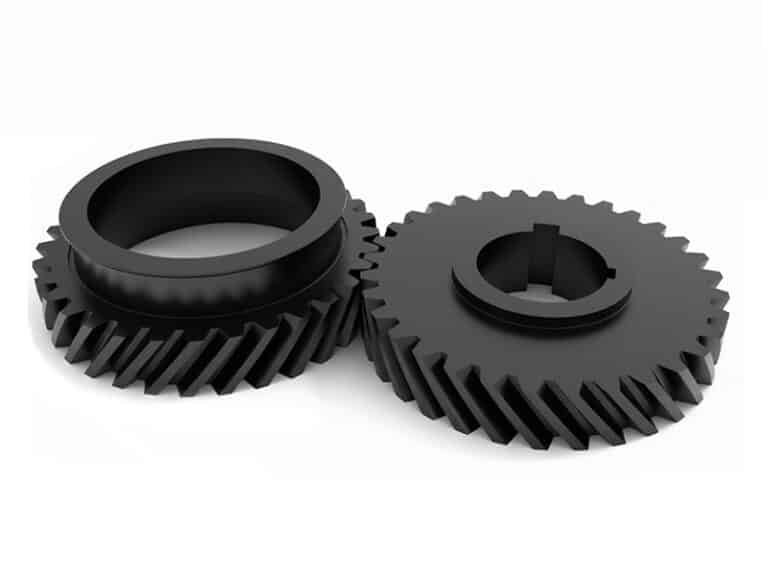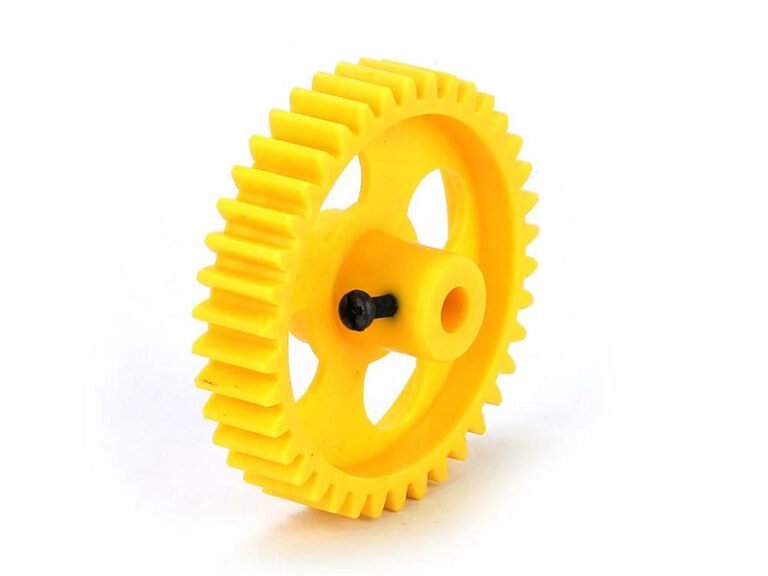Gasket materials ensure leak-free seals and operational reliability in industries from automotive to aerospace. This article dives into the critical role of these materials, exploring their diverse types and their unique properties.
What Is Gasket Material?
Gasket materials are used to seal gaps between surfaces, preventing the leakage of liquids, gases, or other substances. They have elasticity and compressibility, allowing them to form a seal under pressure. Common materials include rubber, metal, graphite, and plastic.
The choice of gasket types and materials impacts sealing effectiveness, equipment safety, and operational costs. Factors like temperature, pressure, and chemical exposure influence the material choice. Proper selection reduces downtime, enhances safety, and lowers maintenance costs, ensuring long-lasting, stable performance.
Primary Types of Gasket Materials
Gasket materials are broadly categorized based on their composition and properties. Each type offers unique characteristics suited to specific applications.
Rubber Gasket Materials
Offers elasticity, good compression resilience, and resistance to corrosion. Specific formulations provide tailored resistance to oils, chemicals, weathering, or temperature (up to 200°C for silicone rubber gasket).
- Nitrile (Buna-N): Resists oils, fuels, and solvents; used in automotive fuel systems and hydraulic seals.
- Neoprene: Withstands weathering, ozone, and moderate chemicals; ideal for HVAC systems and outdoor seals.
- Silicone: Flexible, heat-resistant (up to 200°C), and FDA-approved; used in food-grade and medical applications.
- EPDM: Excellent resistance to water, steam, and UV; common in water pumps and marine applications.
- Viton® (Fluorocarbon): High chemical and heat resistance; used in chemical processing and aerospace seals.
- Butyl: Low gas permeability; suited for vacuum sealing and air conditioning systems.
- Polyurethane: Abrasion-resistant; used in heavy-duty industrial seals.
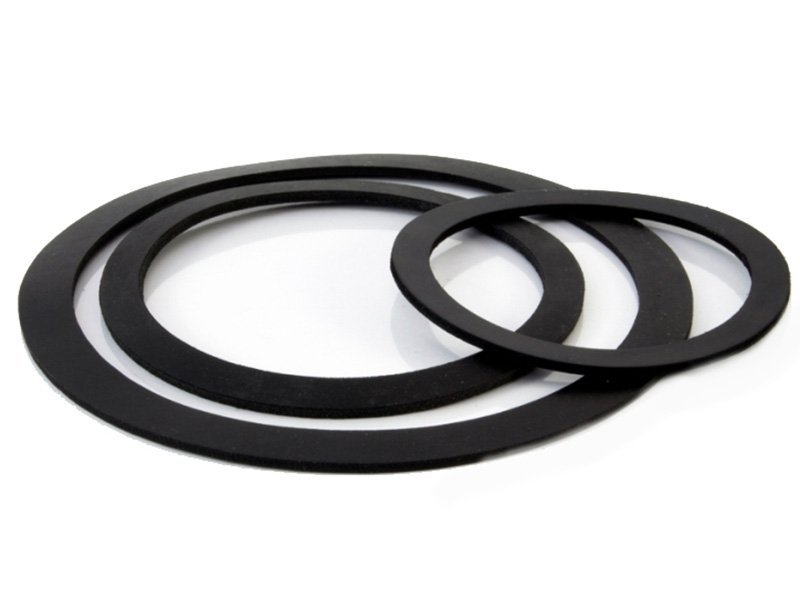
Foam Gasket Materials
Foam gaskets, including sponge rubber and plastic-based foams, offer excellent compressibility, lightweight properties, and sealing performance under low pressure. They are commonly used in enclosures, automotive weather seals, and electronics.
- Closed-Cell Sponge Rubber: Resists water ingress and provides excellent weather sealing.
- Open-Cell Sponge Rubber: Breathable structure allows airflow; used for cushioning and filtration.
- Conductive Foam: Combines compressibility with EMI shielding; used in electronic device enclosures.
- PE and PU Foam: Lightweight and economical; used in packaging, HVAC gaskets, and insulation applications.
![]()
Non-Metallic Fiber Materials
Lightweight, resistant to corrosion, and easy to manufacture. They offer moderate tensile strength.
- Asbestos (historical use): Once widely used for its excellent heat resistance and sealing properties, but now largely replaced due to health concerns.
- Aramid Fiber (e.g., Kevlar): High tensile strength; used in water pumps and moderate-pressure flanges.
- Cellulose Fiber: Economical, paper-like material; used in low-pressure seals like oil pan gaskets.
- Vegetable Fiber (e.g., Detroiter): Eco-friendly, used in low-stress applications like plumbing.
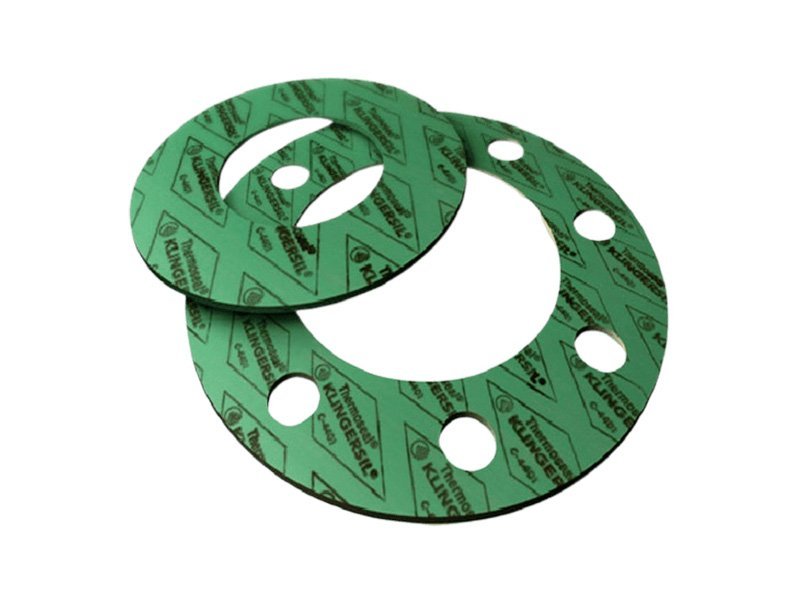
Composite Materials
Offer enhanced durability over standalone rubber or fiber, with moderate resistance to temperature, pressure, and chemicals.
- Rubber/Aramid Blends: Combine flexibility and strength; used in pipeline flanges and general industrial seals.
- Cork/Rubber (e.g., Cork/Nitrile): High compressibility with oil resistance; used in automotive gaskets and valve covers.
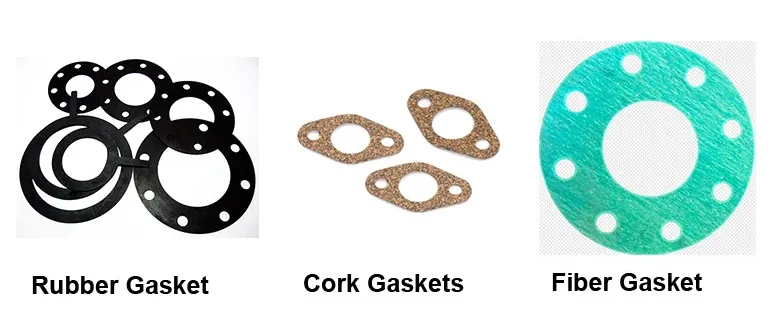
High-Performance Materials
Withstand temperatures up to 450°C (graphite) or 260°C (PTFE) and aggressive chemicals.
- PTFE (Teflon): Near-universal chemical resistance; used in chemical processing and pharmaceutical seals.
- Flexible Graphite (e.g., Grafoil®): High heat resistance; used in steam systems and high-pressure flanges.
- Ceramic Fiber (e.g., Fiberfrax®): Extreme heat resistance; used in furnace seals.
Metallic Materials
High strength and resistance to deformation. Less flexible than rubber gasket material.
- Stainless Steel (Spiral-Wound): Durable under extreme pressure; used in oil refineries and petrochemical plants.
- Copper/Aluminum: Conductive and corrosion-resistant; used in high-pressure heat exchangers.
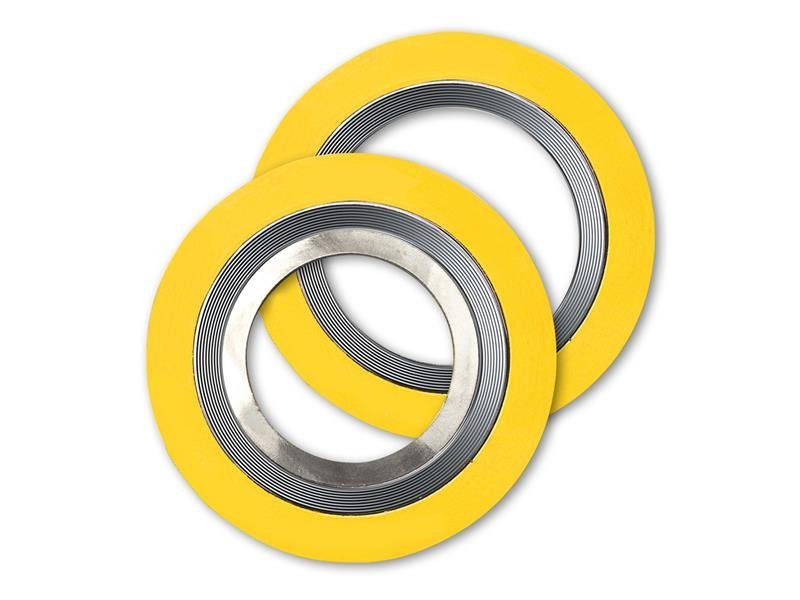
Electromagnetic Shielding Materials
Combine conductivity with sealing properties, often using conductive rubber gasket material.
- Conductive Silicone Rubber: Shields electronics; used in aerospace and telecommunications enclosures.
- Chomerics® Metalastic: High conductivity; used in sensitive electronic devices.
How to Choose the Right Gasket Material — Key Points
1. Check Operating Conditions:
Consider temperature, pressure, and chemicals involved. Choose materials like nitrile for oils, PTFE for corrosives, and silicone for heat.
2. Match Physical & Environmental Needs:
Look at flexibility, surface finish, and exposure to UV or ozone. Use softer foams for rough surfaces, neoprene for outdoor use.
3. Ensure Compliance & Cost Efficiency:
Confirm standards (ASTM, UL, mil-spec) are met and balance cost with performance.
4. Special Requirements:
Use conductive rubber for EMI shielding and metals for extreme pressure or temperature.
Conclusion
From flexible rubber gasket material to robust metallic options, choosing suitable gasket materials is important to the reliability of mechanical systems. For expert guidance and high-quality gasket solutions tailored to your needs, contact Flexiparts Company. Contact us today!

